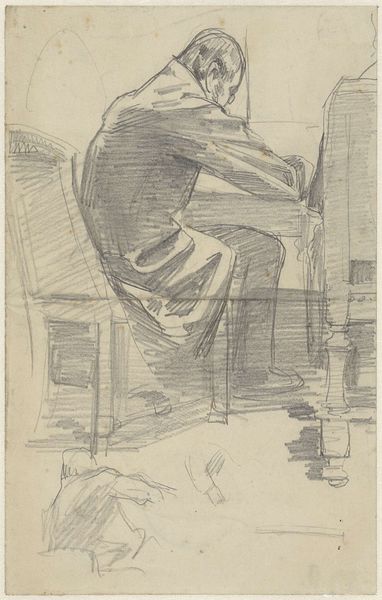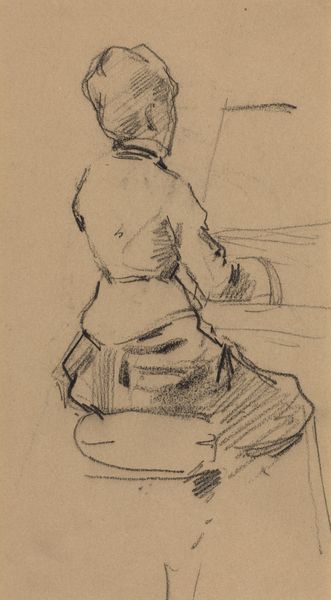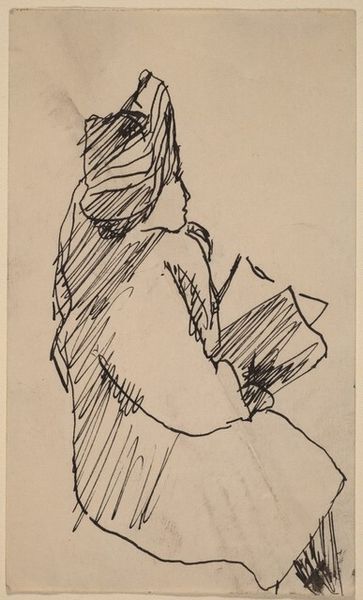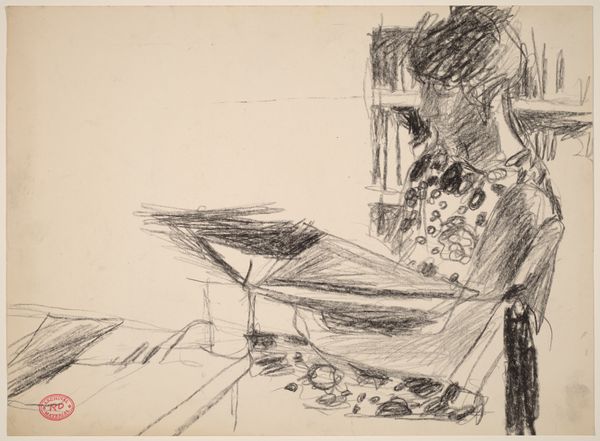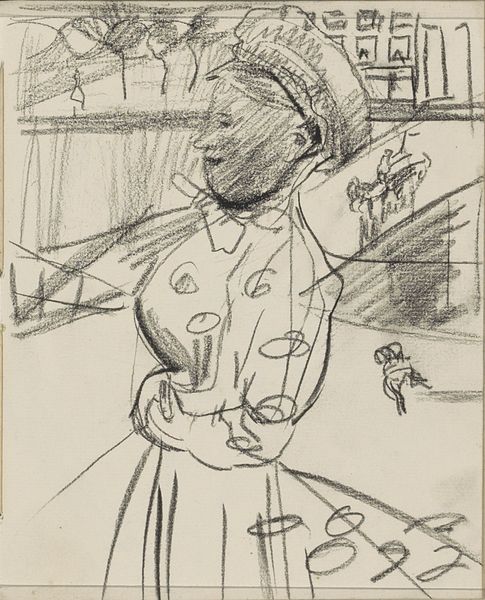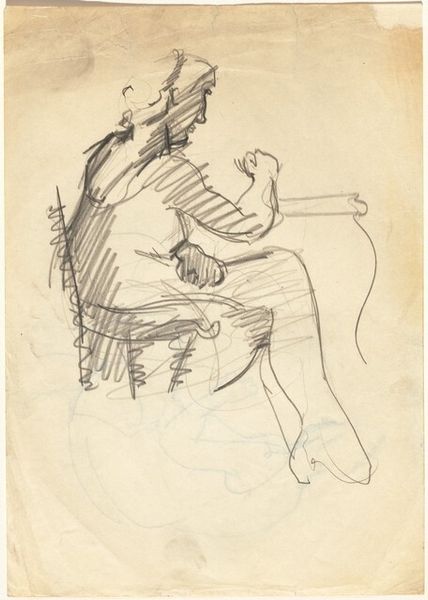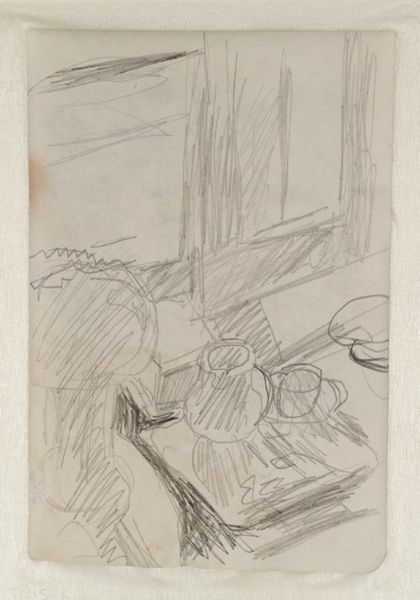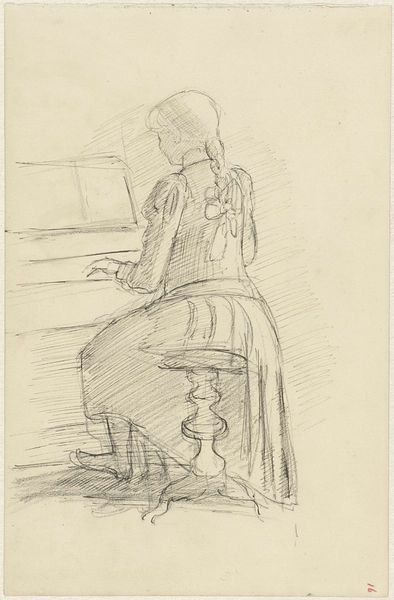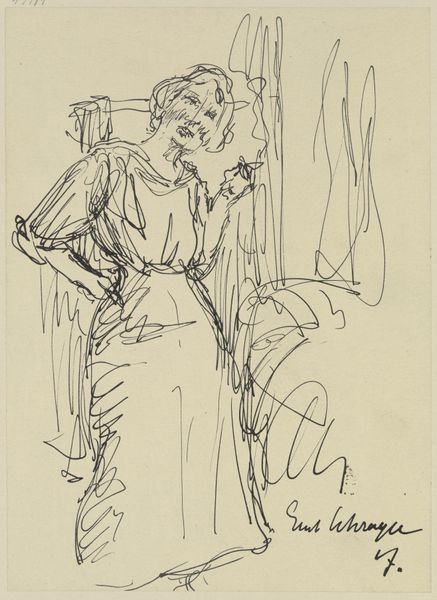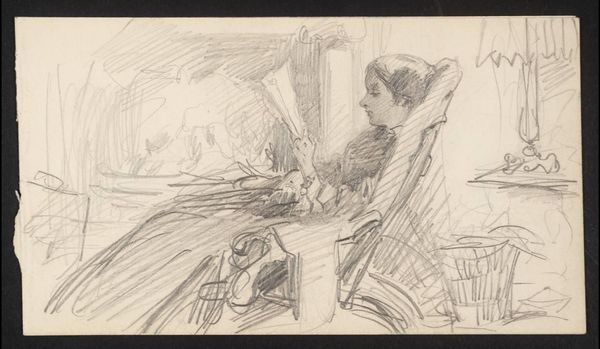
Zittende oude vrouw aan een tafel te Artis, op de rug gezien 1918
0:00
0:00
Dimensions: height 91 mm, width 133 mm
Copyright: Rijks Museum: Open Domain
Editor: This is "Seated Old Woman at a Table in Artis, Seen from the Back" by Samuel Jessurun de Mesquita, made in 1918 using pencil on paper. It feels like a quickly captured moment, almost like a study. What do you see in this piece? Curator: It’s compelling precisely because of its seeming simplicity. De Mesquita’s choice of pencil, a readily available and relatively inexpensive material, is significant. Consider the context: 1918, the tail end of World War I. Resources were strained. A simple pencil sketch on paper speaks to the material constraints and perhaps even a conscious choice to work outside of traditional art market expectations. Notice how the lines, although quickly rendered, give form and weight to the sitter, a woman we find at the zoo in Amsterdam, likely a commonplace, daily figure to the artist, and a subject drawn, probably, for its lack of market value and therefore creative freedom. Does that shift how you perceive the drawing? Editor: It does! The 'ordinariness' of it all – the cheap materials, the everyday subject. Were artists like Mesquita deliberately challenging established artistic norms? Curator: Exactly! This embrace of humbler materials and subjects could be seen as a quiet rebellion against the prevailing emphasis on grandeur and established tastes. De Mesquita may have wanted to explore artistic creation from a democratic perspective. Editor: I never considered the choice of material as part of a social statement. Now I see that the drawing tells more than the eye can perceive. Curator: And also shows the deep engagement of an artist in a moment in time.
Comments
No comments
Be the first to comment and join the conversation on the ultimate creative platform.
